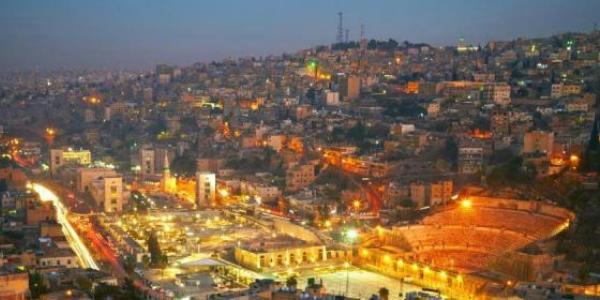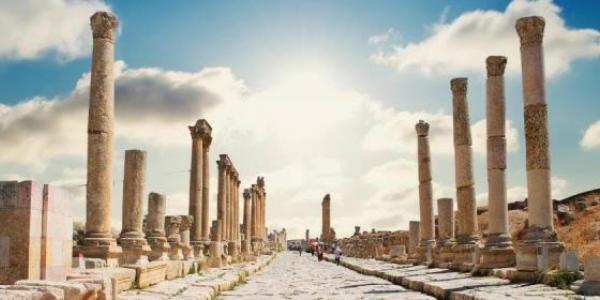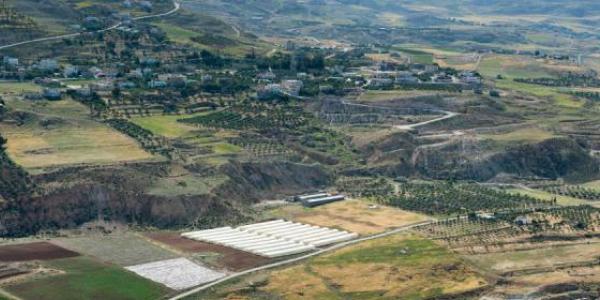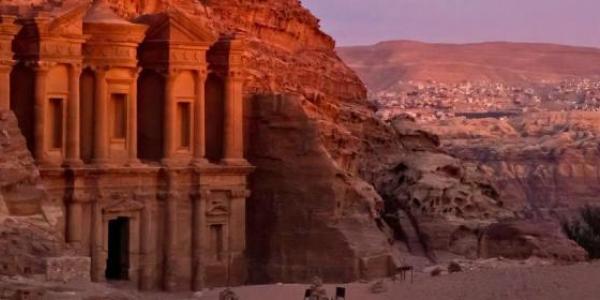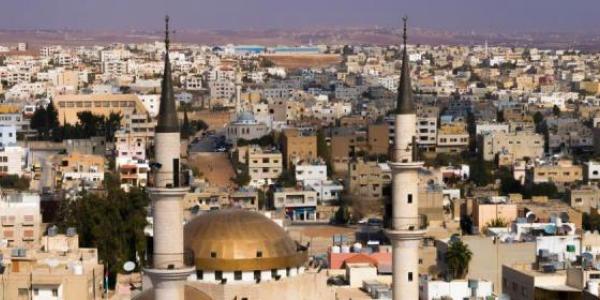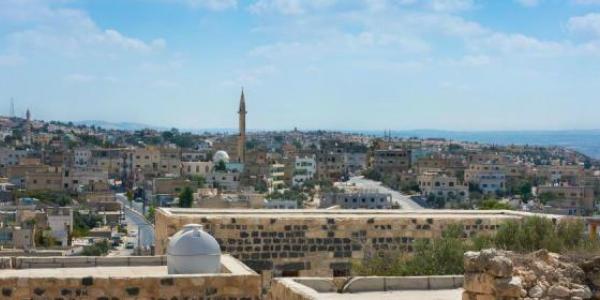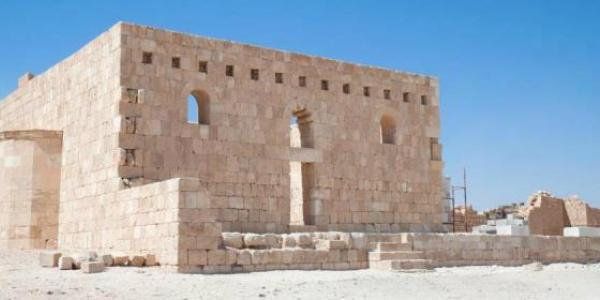Amman Citadel and Umayyad Palace Complex
Amman Citadel (Jabal Qalaa) and the Umayyad Palace Complex is the site of ancient Rabbath Ammon and is home to one of Amman’s most important archaeological sites with ancient remains, at 837 meters above sea-level, the highest points in Amman. The main ruins on the hill today are Roman through early Islamic. There are also excellent views from it across the city and down onto the Roman theatre in the down town. On either side of the viewing point is a flight of stairs. They are easy to go down and up. The most prominent features of this impressive and important site are: the Umayyad City (palace, mosque, cistern), the great Roman Temple of Hercules (62-166 AD) which rises up dominantly, the small Byzantine Church from the 5th-6th centuries and the first archaeological museum of Jordan. It is a good place to begin a tour of the archaeological sites of the city.
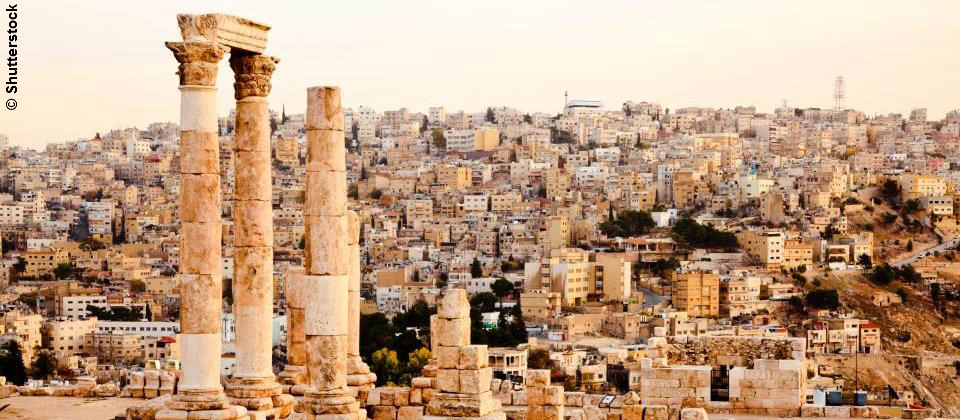
The Umayyad Palace Complex dates back from 720-750 AD. The great monumental gateway with its cruciform shape and four vaulted niches leads to a courtyard and colonnaded street, which runs through the complex with ruined buildings on either side. The Palace Complex was built over the remains of Roman construction and was exploited by the Umayyads to develop various buildings. The complex was probably built during the reign of the Umayyad Caliph Hisham, between 724 and 743 and was used as an administrative centre and governor's residence. The Umayyad Palace was not actually just the mansion of one of the Governors of the Territory of Jordan during the Umayyad dynasty but it was also used by the subsequent occupiers like the Fatimid, Mamluks, etc. The Audience hall is the most significant part of the whole palace complex edifice. It is one of the most famous archaeological buildings not only in Amman citadel but in all of Jordan. It was built by Abdel-Malek ibn Marwan to be used as a reception hall where he could meet his expeditions and army leaders. In 1998 the hall was roofed by a modern wooden dome to allow the structure to be used more easily for modern cultural events. The remains of a large Umayyad mosque is also located just outside the complex. Though the two have different orientations as the mosque had to face the direction of Mecca while the palace could just as well have faced Mecca, the fact that it utilized existing foundation made it difficult. In 749 AD a strong earthquake destroyed many of these building and around a year later, the Abbasids (750–969) overthrew Umayyad rule and renovated and re-divided the residential unit into smaller rooms using wall sections that where cruder than the previous ones.

There is also a bathhouse; a round cistern and an olive-press, but they were found as ruins. The palace is different in its plan and architecture from the rest of the desert palaces in Jordan, for it was built on the foundations of an earlier building, in addition to using the ruins of a Roman temple or perhaps a Byzantine one, in its construction, therefore the ground floor is uneven.
Rujm al-Malfouf
Located in Jabal Amman between 3rd-4th circle next to the Department of Antiquities, it is an Ammonite tower which dates to the late Iron Age. It was built as a fortification system to protect Rabath Ammon against Hebrews’ attacks. But other opinions suggest that they were built for agricultural purposes.
The restored Roman Theatre
It dates back to the 2nd century AD. Built into three sides of the hillside, it seats around 6,000 people and is still used for performances today.
The Roman Forum
A public square, bordered by the theatre and the Odeon, which was amongst the largest of the Roman Empire (100 x 50 metres). The row of columns in front of the theatre is what remains of the colonnades which flanked it.
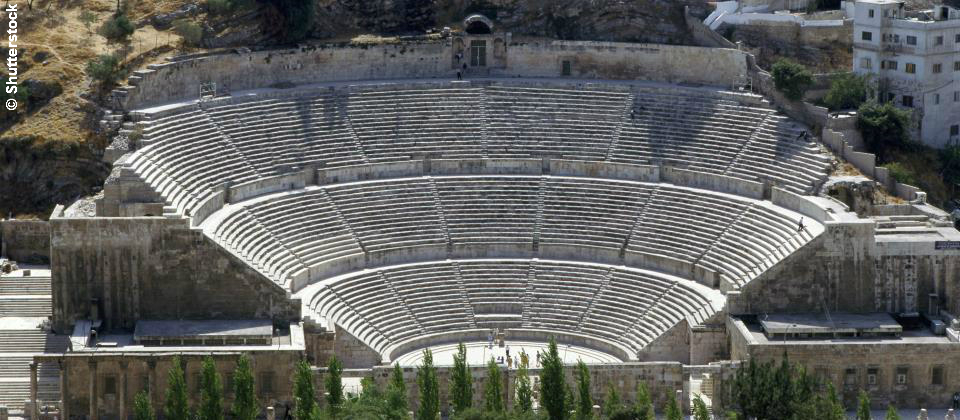
The Nymphaeum
Roman cities always contained ornamental gardens, and old Philadelphia was no exception. The main fountain is close to the theatre complex and dates back to the end of the 2nd century AD.
The Grand Husseini Mosque
A short stroll through the throbbing streets of the heart of downtown Amman and the glittering famous gold souq takes you to the Grand Husseini Mosque. This Ottoman style mosque was rebuilt using striking pink-and-white stone in 1924 by the late King Abdullah I on the site of an ancient mosque built originally in 640 AD by Omar ibn al-Khattab, the second Caliph of Islam and is thought to be the site of the Cathedral of Philadelphia. The historic mosque went through phases in reconstruction, all mosque features suggested that its origin was Umayyad, and through its masonry and arches which are typically Umayyad, of the early period of Umayyad era as the ‘dome of the rock’.
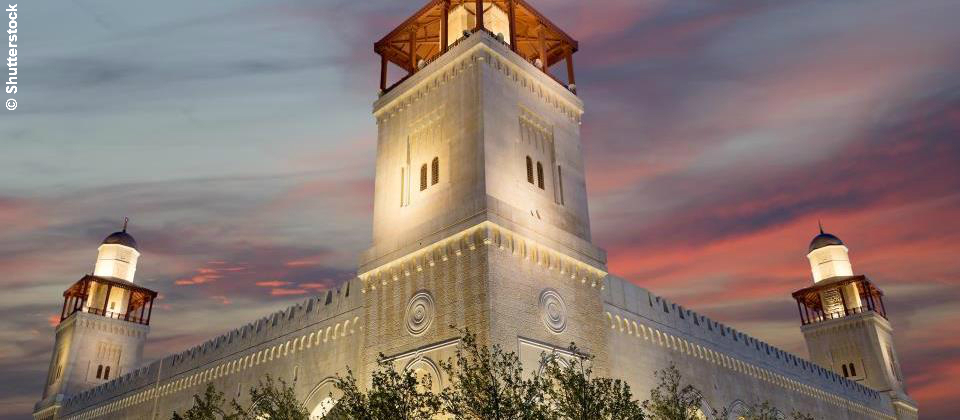
The Jordan Museum
The Jordan Museum is in the downtown area of Ras al-‘Ayn. It presents the history and cultural heritage of Jordan (antique and heritage property) as part of the on-going story of Jordan’s past, present, and future.
Jordan Archaeological Museum
Jordan Archaeological Museum was built in 1951 on the Citadel Hill in Amman. It houses artefacts from all the archaeological sites in the country. Almost all the archaeological periods are represented in the museum.
Among the most important exhibits in the museum are the plaster statues from ‘Ain Ghazal, dating back to around 6000 BC, and the Dead Sea bronze scroll written in Aramaic characters, in addition to the museum with no frontiers website which recounts the Umayyad era in Jordan and the region.



